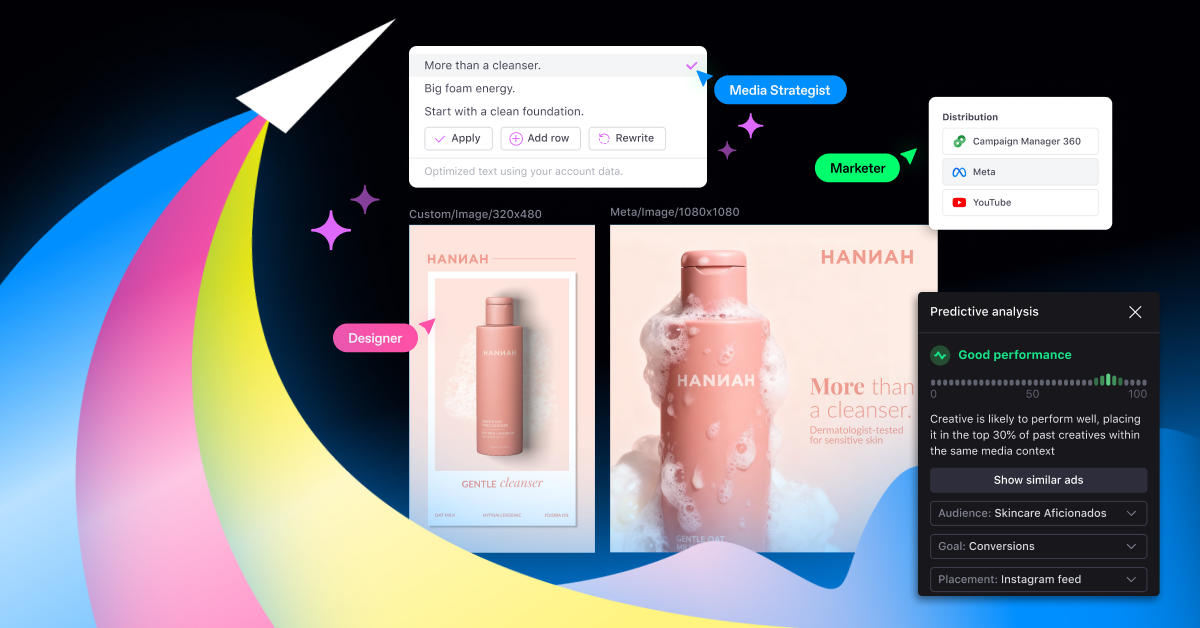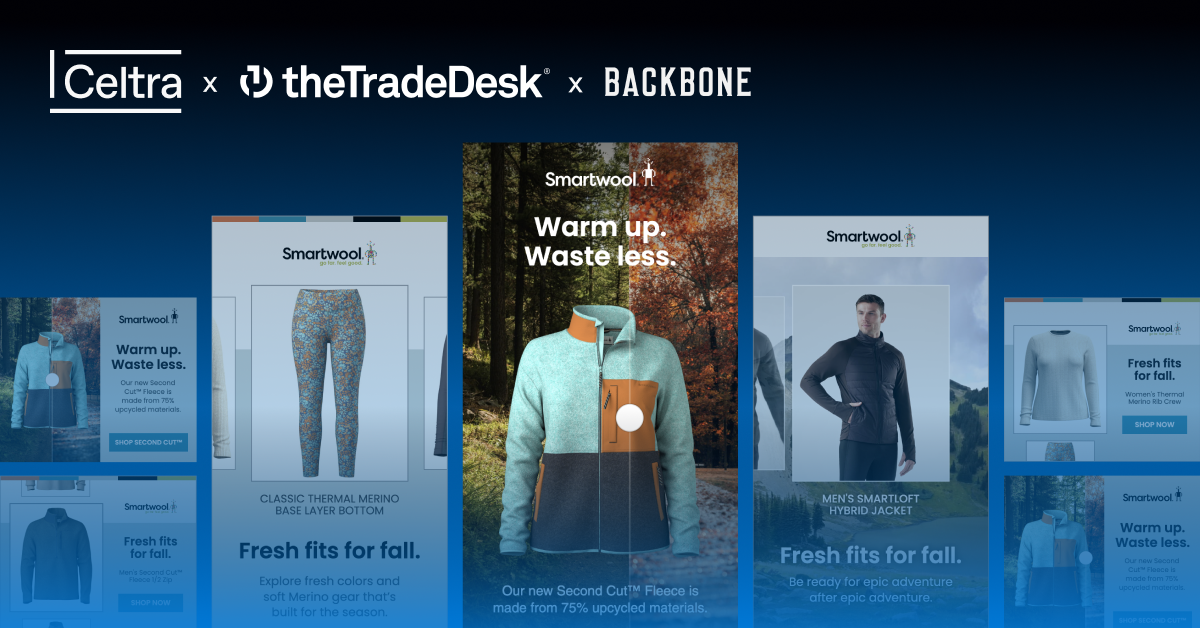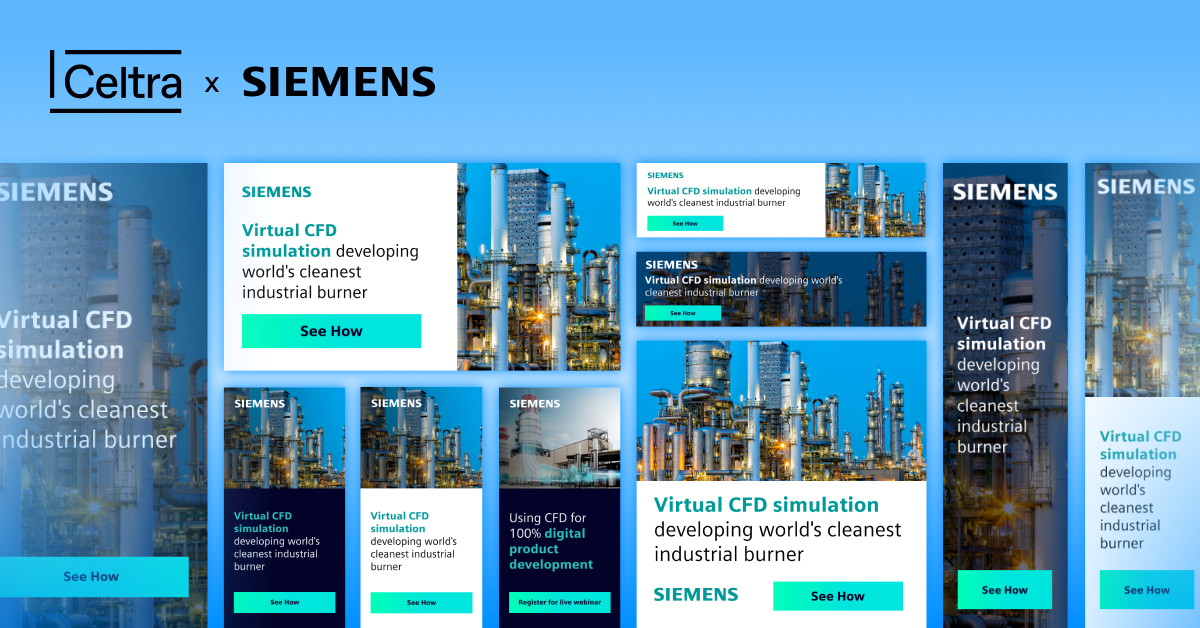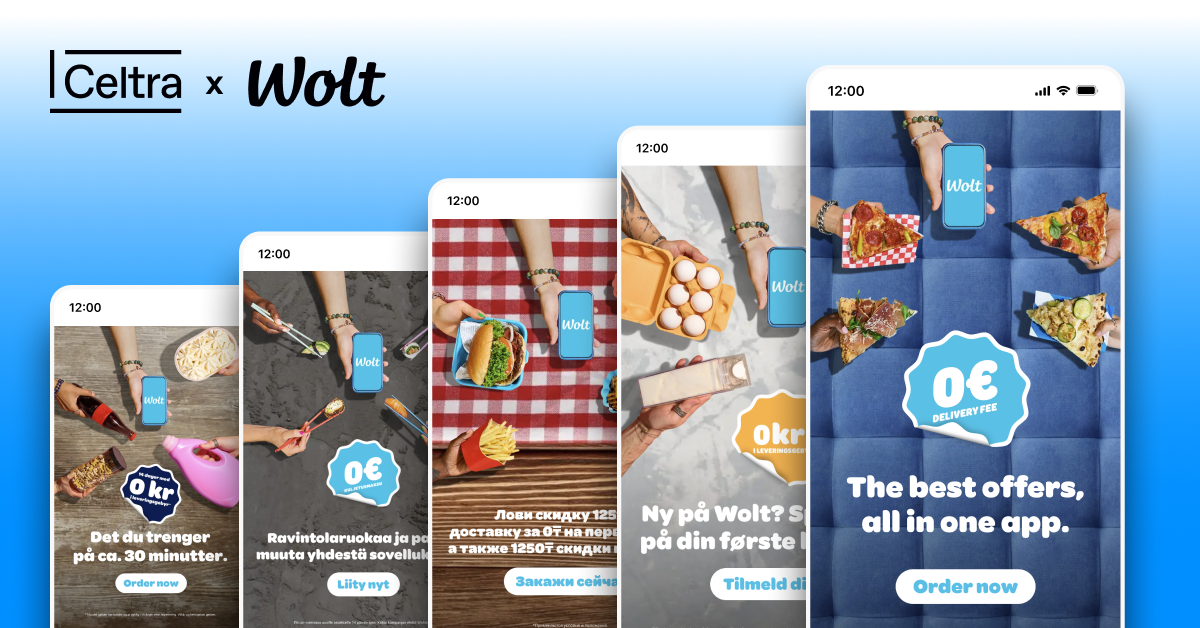You are producing more creative than ever, and it still never feels like enough. Campaigns are bigger, audiences expect more relevance, and every channel now demands content that feels native, intentional, and immediate. The real challenge is no longer just production volume, but managing the entire advertising ecosystem from planning to delivery without compromising quality and brand integrity.
The gaps aren’t coming from talent or ambition; they come from disconnected tools, scattered workflows, and legacy processes that were never built for the pace of modern content demand.
This is where creative automation matters. It becomes the connective tissue of your creative supply chain, helping teams produce, scale, optimize, and distribute content with clarity and cohesion. It removes repetitive bottlenecks and brings every step of the process into one consistent system so your campaigns move faster, perform better, and feel coordinated instead of chaotic.
Creative is still your biggest performance driver
For years, marketers have poured time and budget into media optimization, fine-tuning targeting, placements, and every lever in between. But despite all that effort, the data keeps pointing in the same direction: creative has the biggest impact on performance. According to NCS, creative accounts for 49% of a campaign’s sales contribution, making it the most influential factor in advertising effectiveness.
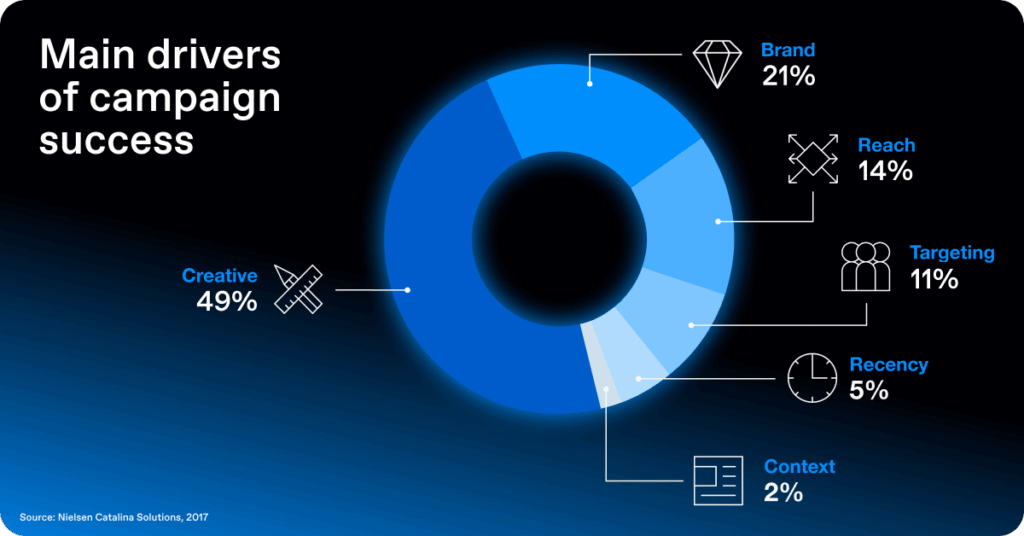
Yet creative is still the least optimized part of the workflow. Teams are stretched, production demands keep rising, and content needs keep multiplying across platforms, markets, and audiences. It’s exactly why Celtra Creative Automation is becoming essential for helping marketers get more out of every idea and every brand asset. Celtra gives teams one system to produce, scale, and optimize creative consistently, quickly, and at quality.
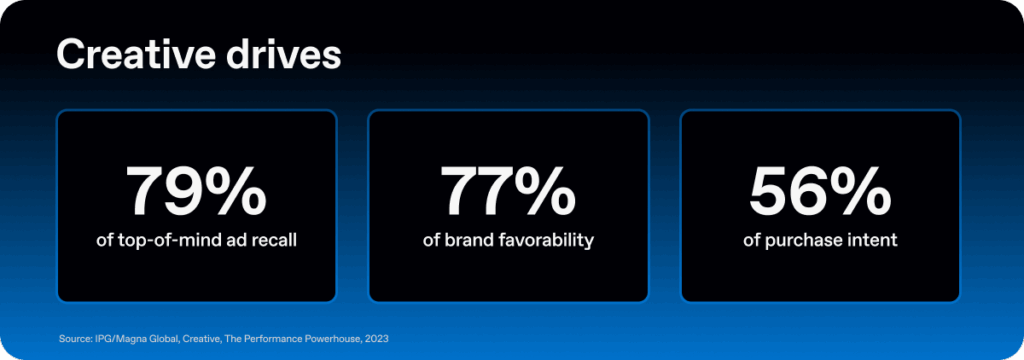
Let’s look at the core challenges that keep marketers from getting the most out of creative and how Celtra Creative Automation paired with AI solves each.
Challenge: Scaling personalization
💡 Solution with Celtra Creative Automation + integrated AI: Automate creative production and distribution to generate high-quality variations across channels, sizes, and markets without adding headcount. South China Morning Post boosted output from 1 to 6 monthly campaigns with a 2.8x efficiency lift using Celtra’s Creative Automation.
Challenge: Lacking relevant content
💡 Solution with Celtra Creative Automation + integrated AI: Use AI-driven insights like Celtra’s AI Creative Lookup to validate concepts early, and pair it with Celtra’s AI Text Optimizer to instantly generate brand-aligned message variations for every segment, based on previous performance.
Challenge: Maintaining brand consistency
💡 Solution with Celtra Creative Automation + integrated AI: Keep messaging and visuals consistent across global and local markets with centralized production and brand-approved toolkits that make scaling fast and foolproof. Spotify produced over 14,000 on-brand creatives across 111 markets with toolkits powered by Celtra’s Creative Automation.
Challenge: Investing in campaigns that work
💡 Solution with Celtra Creative Automation + integrated AI: Use a predictive pre-flight scoring model, like Celtra Score, to predict, filter, and only launch creatives with the highest potential.
Challenge: Optimizing creative assets for media
💡 Solution with Celtra Creative Automation + integrated AI: Connect your creative supply directly to media requirements so assets are built for the right placement and targeting from day one.
As you might’ve noticed, many of these challenges share one root cause: creative and media aren’t working from the same system. Celtra Creative Automation solves that.
How Celtra’s Creative Automation finally connects media and creative
Creative and media teams pursue the same goal—performance—but often operate in silos. Creative produces the assets; media decides where, when, and how those assets get delivered. But when these workflows aren’t aligned, you lose time, consistency, and ultimately revenue.
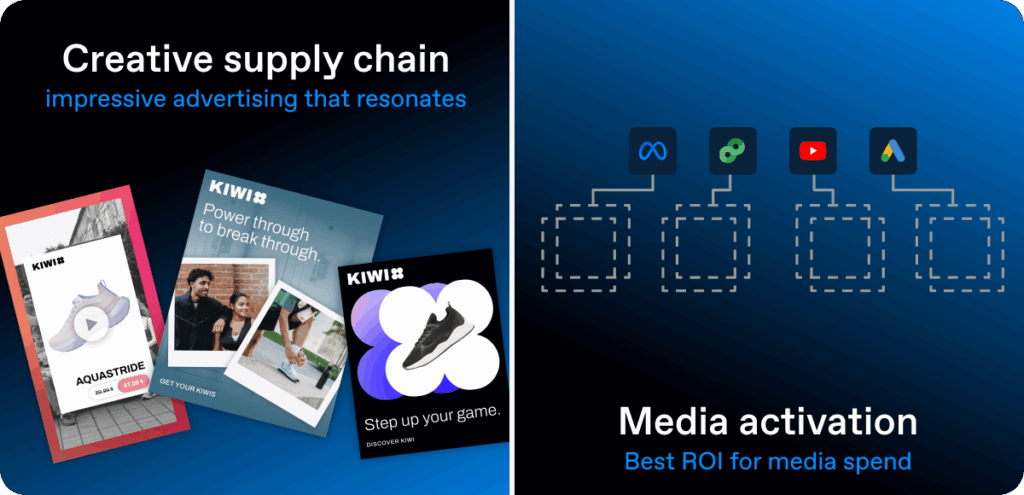
Celtra Creative Automation brings data, insights, production, and media activation into one connected system.
1. Shared insights guide decisions from the start
AI-driven creative analysis tools, such as Celtra’s AI Creative Lookup uncover patterns from past ads; what visuals, messages, or formats performed best, so you understand what works before you begin creating new assets.
2. Automated production aligned to media needs
Automation ensures your creative is built to exact placement specifications, without manual resizing, rework or the risk of human mistakes. It also ensures all the media elements such as CTAs, headlines, descriptions, and click-through links, are set up correctly.
3. A real-time feedback loop improves every campaign
Performance insights flow back into production so your team continuously updates and improves creative, not only after the campaign ends.
4. Centralized workflows keep all assets, feedback, and approvals in one place
Creative assets, feedback, approvals, and reports live in one place. Your team avoids confusion and moves campaigns to market faster. And because distribution happens from the same platform where the creatives were produced, teams launch campaigns with confidence, clarity, and zero back-and-forth.
AI doesn’t replace creative work; it accelerates it
In 2026, AI will be baked into every part of advertising. The challenge won’t be adopting it, but applying it responsibly and effectively.
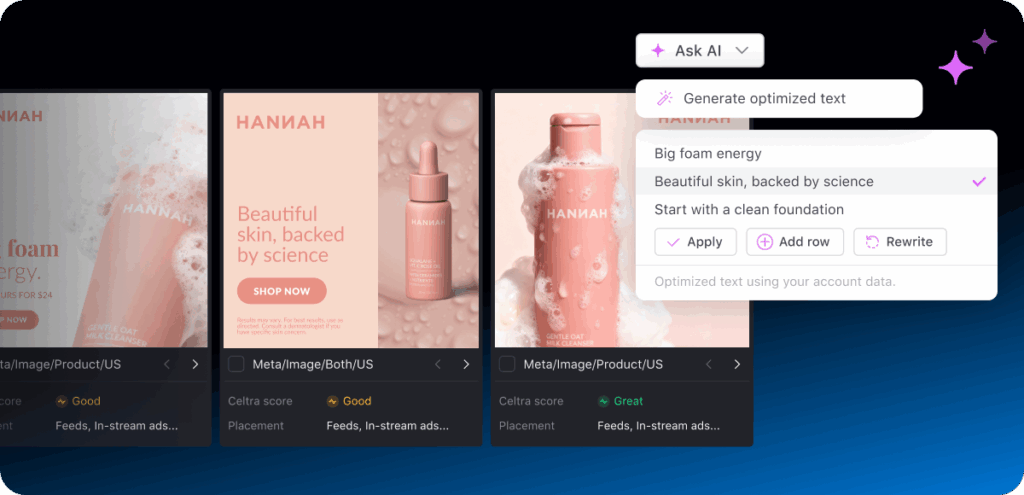
Inside a creative automation platform, AI becomes part of a repeatable, scalable creative system. With Celtra, AI helps teams:
- Analyze past performance to guide future creative decisions
- Generate text and visual recommendations for stronger engagement
- Score assets pre-launch to predict what will perform
AI becomes exponentially more valuable when it works inside a creative automation platform. Not sure where to start? Read our Guide to Integrating Technology into Your Marketing Strategy.
Why 2026 is the tipping point for creative automation
The volume of content your team needs will only continue to rise. Media complexity will grow, AI will accelerate expectations, and creative will remain the biggest driver of performance.
Creative automation provides you with what modern marketing requires:
- More creative output for less operational strain
- Alignment between creative and media
- Faster time-to-market across every channel
- Personalized and localized creative at scale
- AI-powered insights baked into the production cycle
- A creative supply chain that finally meets performance goals
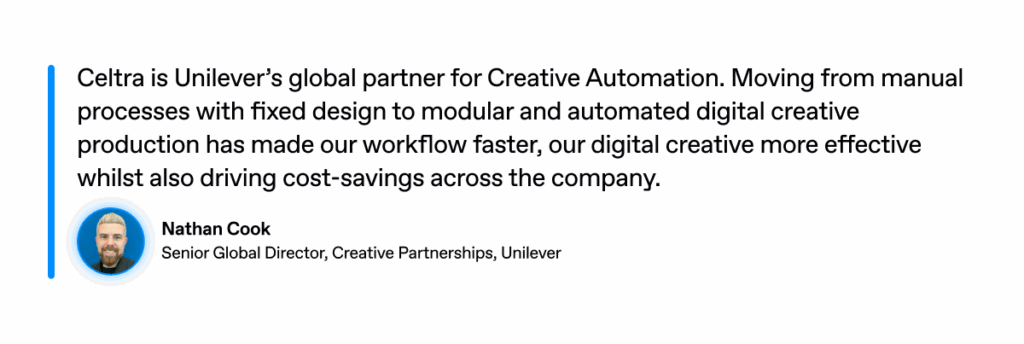
Are you ready to lead the charge in 2026? Take a closer look and explore how Celtra Creative Automation can transform your advertising strategy and unlock unparalleled efficiency.
Frequently asked questions
Creative automation is a platform-driven approach that systematizes creative production, reduces manual work, and scales content across channels and markets using templates, automation, and AI.
Because teams now need more content than ever, optimized for more channels, audiences, and formats. Celtra Creative Automation helps brands meet this demand efficiently and consistently.
By aligning asset production with media requirements from the start — increasing quality, reducing waste, and boosting ROAS.
AI enhances analysis, generation, scoring, and scaling. Inside a creative automation platform, AI becomes structured, reliable, and brand-safe.
Modular design breaks creative into reusable components that adapt easily for different markets. It’s the fastest way to scale personalization while protecting brand consistency.

